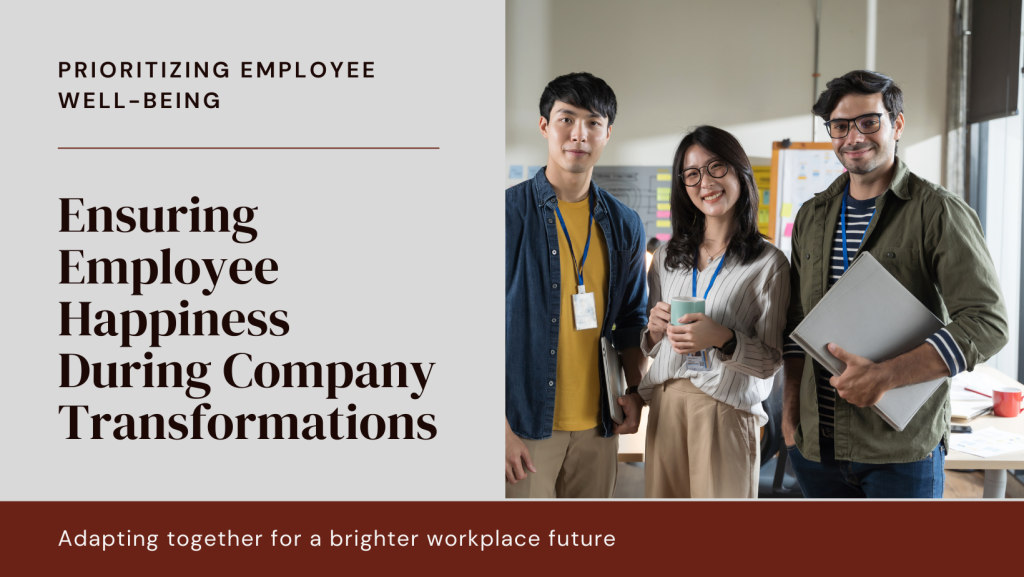Organizational changes, such as mergers, restructuring, or leadership transitions, can impact employee satisfaction and morale. Effectively managing these transitions is crucial to maintaining a positive work environment and retaining talented employees. Here are strategies for navigating organizational changes while prioritizing employee satisfaction:
Do’s:
- Transparent Communication: Communicate openly and transparently about organizational changes, including reasons, goals, and potential impacts. Address employees’ concerns and provide regular updates throughout the transition process.
- Employee Involvement: Involve employees in decision-making processes related to organizational changes. Seek their input, ideas, and feedback to foster a sense of ownership and commitment to the future direction of the organization.
- Provide Support and Resources: Offer support services, resources, and training programs to help employees navigate and adapt to changes. Provide guidance, reassurance, and opportunities for professional growth during transitional periods.
- Maintain Consistency: Preserve core aspects of the organization’s culture, values, and mission throughout changes. Reinforce stability and continuity to minimize uncertainty and maintain employee confidence in the organization’s direction.
- Recognize and Reward Resilience: Acknowledge and reward employees for their adaptability, resilience, and contributions during periods of change. Celebrate milestones, achievements, and teamwork to boost morale and motivation.
Don’ts:
- Underestimate Impact: Underestimate or overlook the potential impact of organizational changes on employees’ morale, job satisfaction, and productivity. Anticipate challenges and proactively address concerns to mitigate negative effects.
- Exclude Communication Channels: Limit communication channels or withhold information about changes from employees. Create opportunities for dialogue, questions, and discussions to ensure transparency and clarity.
- Neglect Emotional Support: Fail to provide emotional support or resources to help employees cope with uncertainty, stress, or anxiety during transitional periods. Offer counseling, wellness programs, and resources for mental health support.
- Implement Changes Abruptly: Rush into implementing changes without proper planning, preparation, or consideration for employees’ readiness or concerns. Gradual implementation and phased approaches can facilitate smoother transitions.
- Overlook Feedback: Disregard employees’ feedback, ideas, or suggestions about the implementation or impact of organizational changes. Listen actively, address concerns, and incorporate constructive input into decision-making processes.
These articles provide comprehensive insights and practical advice for businesses seeking to enhance employee satisfaction through effective strategies, engagement initiatives, and thoughtful management of organizational changes. By prioritizing employee well-being and fostering a positive work environment, businesses can cultivate a motivated and productive workforce that contributes to long-term success.




